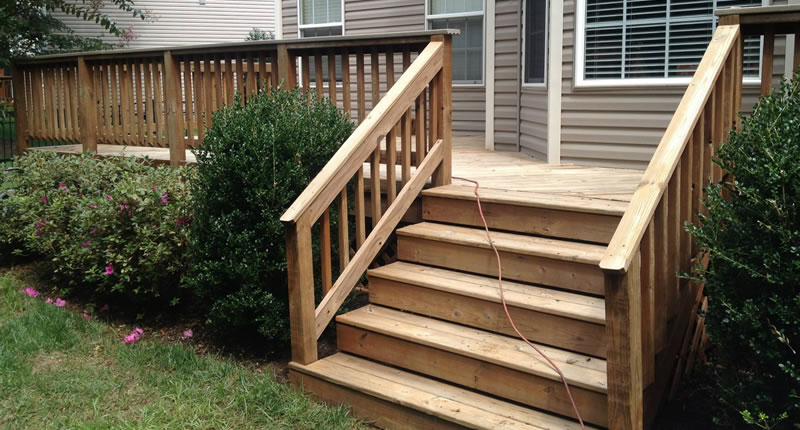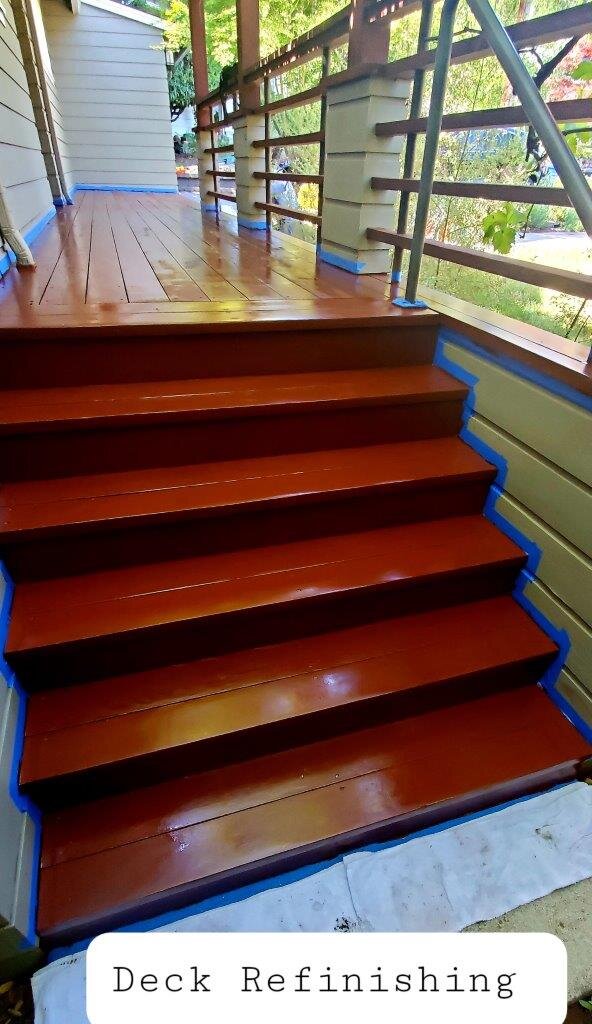Deck Staining 101: Everything You Required to Know for a DIY Project
From preparing the deck surface area to selecting the ideal type of discolor and mastering the application strategies, each action plays a critical duty in accomplishing a professional finish. Join us as we decipher the important standards and expert suggestions for understanding the art of deck staining, guaranteeing an effective DIY task that will certainly leave your deck looking impressive.
Significance of Deck Discoloration
Deck discoloration is an essential upkeep job that preserves the long life and look of outside wood structures. Wood decks are regularly subjected to severe components such as sunlight, rain, snow, and foot web traffic, all of which can bring about put on and tear gradually. By using a layer of tarnish to the deck's surface area, you develop a safety obstacle that aids protect against dampness infiltration, UV damages, and rotting of the wood. This not only extends the lifespan of the deck but also maintains its visual appeal.
It supplies a chance to customize the look of the deck by selecting from a variety of tarnish shades and finishes. In essence, normal deck staining is a simple yet reliable method to ensure your deck continues to be structurally sound and aesthetically pleasing for years to come.
Deck Prep Work Steps

After cleaning and repairing, sanding the deck is essential to ravel harsh surface areas and open up the wood's pores to much better absorb the discolor. Utilize a coarse-grit sandpaper complied with by a finer grit for a sleek coating. As soon as the deck is clean, dry, and smooth, safeguard any type of close-by plants, furnishings, or surface areas with a ground cloth prior to using the deck tarnish. Following these preparation actions vigilantly will result in a perfectly tarnished deck that is well-protected and cosmetically pleasing.
Picking the Right Discoloration
Choosing the ideal tarnish for your deck is an important choice that straight affects both its appearance and resilience. When choosing the appropriate tarnish, there are a number of elements to consider to make certain an effective DIY project.
To start with, you require to decide between clear, semi-transparent, and solid discolorations. Transparent spots allow the all-natural grain of the wood to reveal via however offer very little defense against UV rays and dampness. Semi-transparent stains supply a compromise in between shade and security, while strong spots supply the most defense but cover the timber grain.
Next, take into consideration the sort of wood your deck is constructed from, as different spots work much better with certain timber types. Cedar and redwood decks often look ideal with a semi-transparent or clear discolor to highlight their all-natural charm. Pressure-treated timber might profit from a strong discolor to hide flaws.
Finally, consider the climate in your location. Opt for a tarnish with UV protection and resistance to extreme weather condition problems if you experience severe winters or intense sunlight. By very carefully taking into consideration these components, you can choose a stain that enhances your deck's aesthetics and longevity.

Applying Stain Appropriately
When considering the application of tarnish to your deck, it is vital to pay very close attention to the specific attributes of the stain chosen and how it engages with the kind of timber and ecological problems formerly pondered. Prior to beginning the discoloration process, guarantee that the deck surface is tidy, completely dry, and without any previous coverings or debris. It review is suggested to check the picked tarnish on a little low-profile location of the deck to make sure compatibility and attain the preferred color and surface.
Use the tarnish along the size of the deck boards to prevent irregular pooling - fence staining near me. It is critical to work with the timber grain to their explanation enhance the all-natural elegance of the deck and permit for much better penetration of the tarnish.
Upkeep and Care Tips

One more crucial element of deck upkeep is safeguarding it from the components. Frequently cutting nearby foliage can also avoid fallen leaves and branches from accumulating on your deck and creating possible damages.
Verdict
Finally, deck discoloration is an essential step in preserving the look and long life of your outdoor room. By properly preparing the deck, picking the best discolor, applying news it properly, and adhering to maintenance pointers, you can guarantee a attractive and sturdy coating that will last for years to find. Bear in mind to frequently care and check for your tarnished deck to maintain it looking its best.
Join us as we unwind the crucial standards and expert tips for mastering the art of deck staining, making certain an effective DIY job that will leave your deck looking flawless. - fence staining companies near me
In significance, routine deck staining is an easy yet efficient way to ensure your deck continues to be structurally audio and aesthetically pleasing for years to come.
Once the deck is tidy, completely dry, and smooth, protect any kind of neighboring plants, furniture, or surface areas with a decrease fabric before applying the deck tarnish.Following, consider the kind of wood your deck is made of, as different spots function much better with certain timber species.When thinking about the application of stain to your deck, it is crucial to pay close attention to the specific qualities of the discolor selected and how it interacts with the type of timber and ecological problems formerly deliberated.